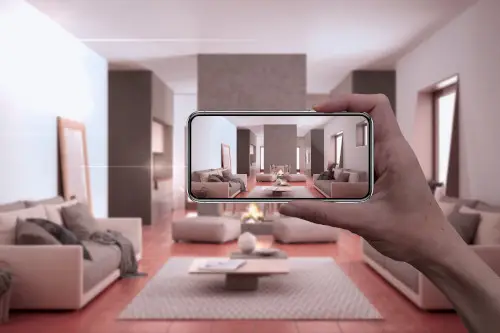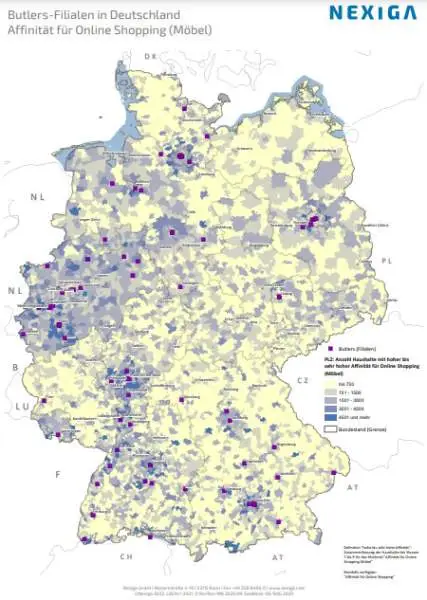At the end of last year, it was announced that the online furniture retailer Home24 wanted to take over the well-known furniture chain Butlers. In future, Home24 furniture would be presented in the real world in selected Butlers stores. The merging of the online and offline worlds is seen as a model for the future in retail/e-commerce and location planning and location analysis is becoming an "online tool.
Other online retailers are also taking steps to explore the advantages of bricks-and-mortar retail to some extent. This primarily involves the introduction of technologies, but also the strengthening of brand presence.

Furniture online and on site
Home24 has been operating as a brand since 2012; the company was founded in 2009. The online furniture retailer has an international focus and, after a foray into Southeast Asia, is now mainly active in Central Europe. The store approach is not entirely new: there were already several outlet stores in Germany before the planned takeover of Butlers, in addition to Berlin, Hanover and Cologne also in the tranquil town of Neu-Ulm.
According to the CEO, the Butlers takeover is a situation in which one plus one equals more than two, as reported by the FAZ. He may also be thinking of the ROPO effect(research online and purchase offline), i.e. the behavior of driving purchasing decisions through Internet research and then buying products in brick-and-mortar stores. However, it makes perfect sense to do this the other way around for more "unwieldy" furniture. There is also a term for this: showrooming.
The addition of brick-and-mortar stores primarily creates a stronger brand presence in the mindset of shoppers, a kind of confidence-building measure. In addition, the colorful Butlers range of home accessories encourages impulse purchases and provides inspiration for decorating the home. Other well-known online retailers are also making inroads into bricks-and-mortar retail.
Consumption scores: Affinities for online shopping
Internet shopping is available (almost) everywhere, stores always serve a local or regional environment. In both cases, however, spatial target group analysis can be helpful in planning regional advertising measures. Both online and offline campaigns.
Our map (PDF ) shows the number of households with a high to very high affinity for online shopping (in relation to furniture) at zip code area level (Zip code). In our data, the affinity is given in values between 1 and 9, with 1 describing a very low and 9 a very high affinity of households. The values 7 to 9 were summarized in the map.
The absolute potential is represented by the number of affine households. Populous Zip code with many households, such as in North Rhine-Westphalia or other conurbations, show corresponding target groups and potential sales areas. This is also important for location planning.
Department stores from Amazon and Zalando
The world's largest online retailer Amazon is planning to open a 30,000 square meter fashion department store called "Amazon Style" in Glendale, a suburb of Los Angeles, California this year, as reported by Handelsblatt . Amazon primarily wants to sell clothing, shoes and accessories there. Sample garments are displayed on the shelves alongside the now ubiquitous QR codes, which can be scanned with the Amazon shopping app to display available sizes and colors. Conveniently, this also includes customer reviews that have already been collected in the online world. Items can be tried on in a fitting room or sent directly to the checkout via the app.
This is a good example of how digital technologies can be transformed into stationary retail. Good experience has already been gained with the Amazon Go grocery store (where purchases are made without a checkout area), and many tech-savvy customers have quickly become accustomed to the new shopping experience.
Zalando, now a DAX-listed company from Berlin, also operates so-called outlets as satellites in stationary retail. There are currently 12 locations in Germany. In March 2021, for example, a store opened in the old town of the Lake Constance metropolis of Constance, with around 15,000 products from 2,200 brands, according to the company. With 1,100 square meters of retail space, this is a truly impressive fashion department store for an online retailer.
Are you interested in market data on consumption or retail? Nexiga's consumption scores describe the affinity of consumers with regard to sales channels and various product categories, as well as customer cards, installment loans, vacation trips and eco-products.

